Review – Hyundai IONIQ 6 (2024) – 600 kilometers of range and 15 minutes of fast charging
Spectacular
The Korean brand Hyundai currently builds perhaps the most spectacular models you can buy, apart from expensive sports cars and supercars, of course. We mentioned above the new Kona and the striking IONIQ 5, but there is also a street-legal racing version of the latter: the 478 kW (650 hp) strong IONIQ 5 N.
IONIQ 6
Surely Hyundai’s absolute eye-catcher at the moment is the IONIQ 6. This extremely streamlined car is almost as aerodynamic as the Mercedes-Benz EQS. With its aerodynamic design, it almost looks like a big drop of water on wheels, cutting through the air effortlessly. Even the Hyundai logo on the hood has been made thinner to minimize drag. With its low CW value of 0.21, this car was built with one goal: maximum range.
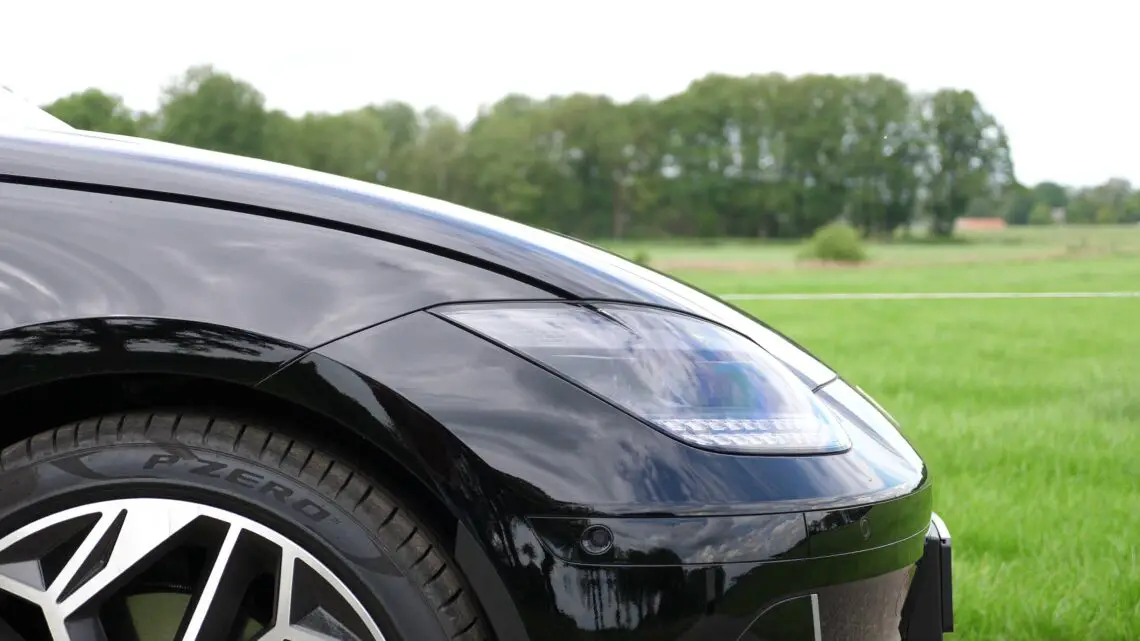
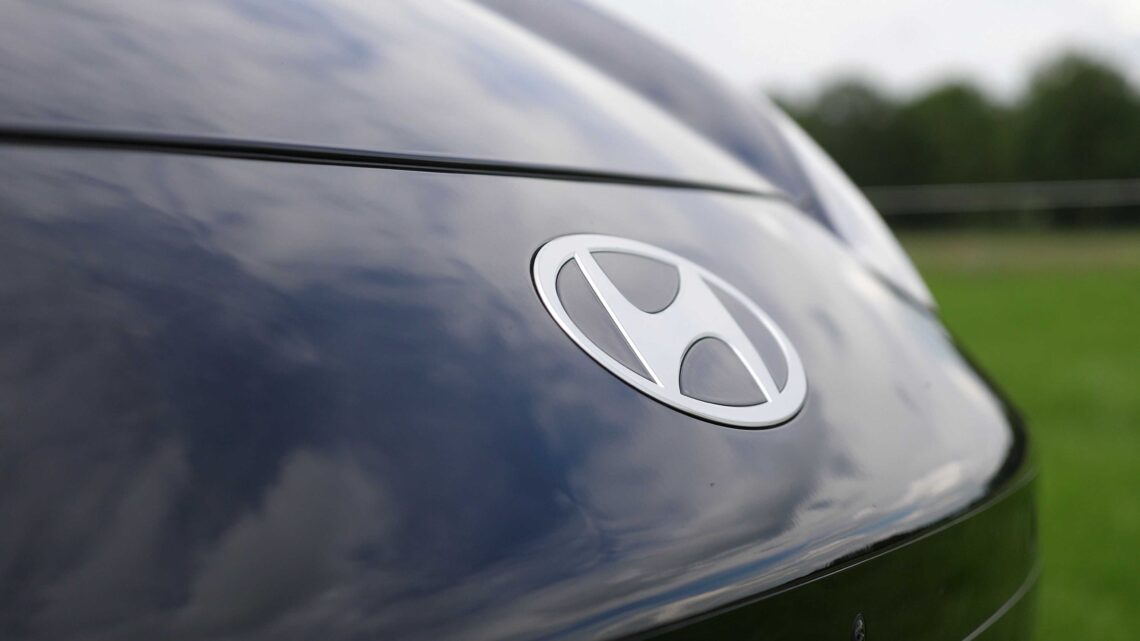
Which one should you have?
The IONIQ 6 is available with two battery variants: a 53 kWh version with a 429-kilometer range and a 77.4 kWh version that achieves a whopping 614 kilometers on paper. The small battery sends its power to a 111 kW (151 hp) electric motor. The AWD variant has the large battery in the floor as standard and an electric motor on both the front and rear axles that together deliver 239 kW (325 hp). This allows it to sprint from 0 to 100 km/h in 5.1 seconds and has a WLTP range of 520 km.
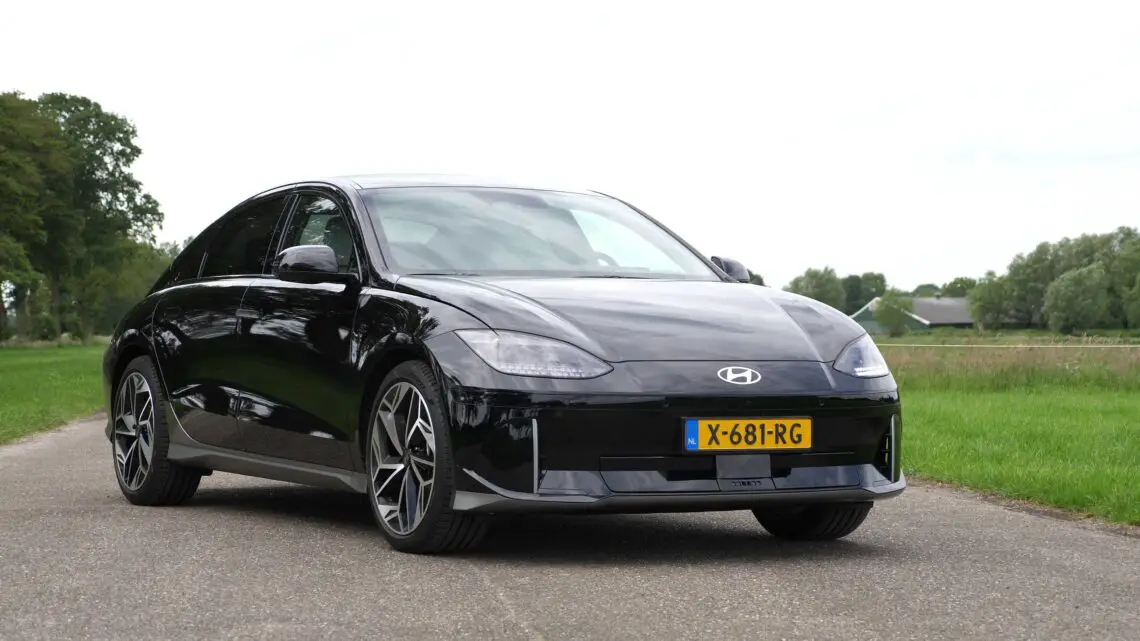
IONIQ 6 RWD Long-Range
In the Netherlands, you actually have to have the version we are testing: the RWD Long-Range. It features the large battery and a single electric motor – on the rear axle – with 168 kW (228 hp). In fact, this variant has the best range: 614 km. In addition, with a 0-100 time of 7.4 seconds, it is smooth enough.
During our week of testing, consumption regularly dipped below 160 watt-hours per kilometer. In eco mode, we even achieve less than 15 kWh/100 km. Impressive, especially when you realize that our test car rolled on 20-inch wheels. They fill the wheel arches nicely, but with 18-inch wheels you are very likely to dip below 14 kWh/100 km and get 550-600 kilometers in practice. With the big wheels, we end up with about 500 real miles. Also a very neat score, of course, because for many Dutch people, loading once or twice a week is often more than enough.
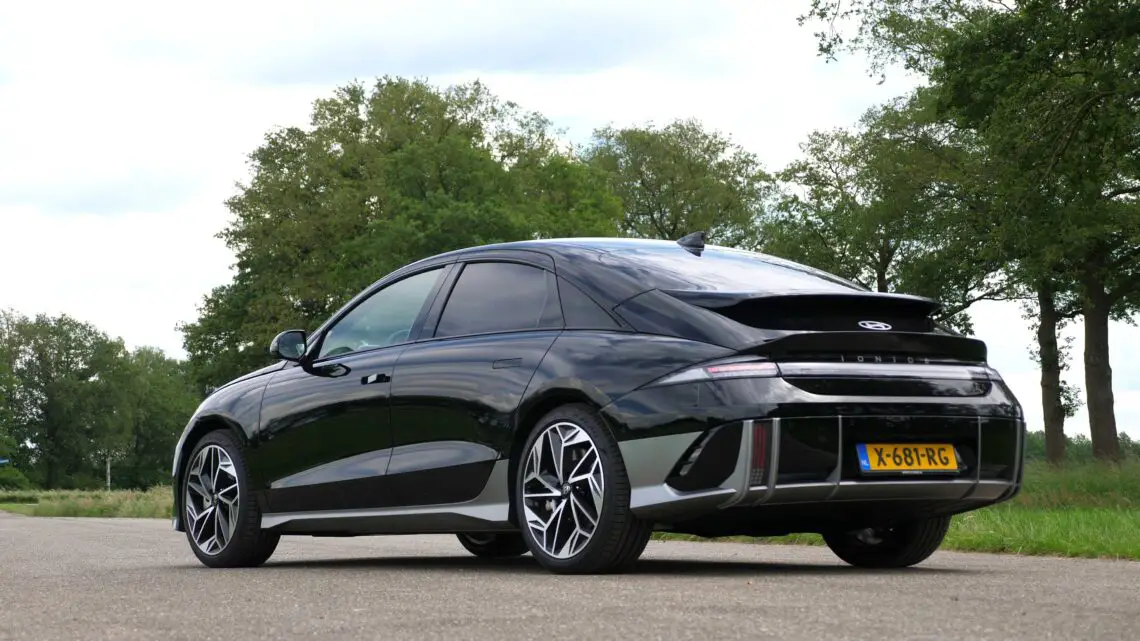

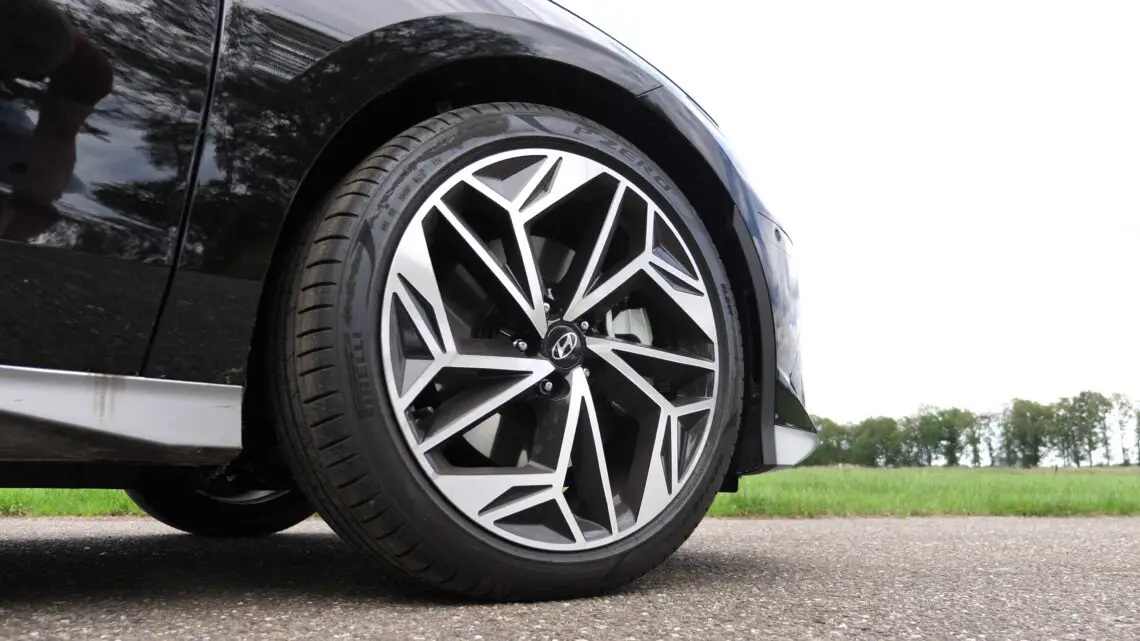
Fast Charging Champion
Moreover, loading is a snap. Few EVs can charge as quickly as the IONIQ 6. It can handle up to 240 kW with a fast charger. Moreover, it maintains the high payload for a long time. Even around 70% SoC (state of charge), it can still handle 160 kW of charging power. That is already more than many competitors can handle as maximum payload. A Volkswagen ID.4 achieves 135 kW on its best day. So the IONIQ 6 does that even when the battery is already nearly full. The result? At a Fastned location along the A1, we pop the battery from 25 to 80 percent full in 16 minutes. Just enough time for your coffee to cool to drinkable temperature….

But is it somewhat practical?
The IONIQ 6 is clearly less practical than the IONIQ 5. Whereas the IONIQ 5 is a hatchback, the IONIQ 6 is a sedan. So it has a traditional tailgate, through which no tall items will fit. So the ‘6’ is not an ideal moving van, but thanks to its deep luggage compartment, it easily holds a good number of suitcases, crates and bags. So it’s perfectly usable as a vacation car, as long as you don’t take high items with you. Under the hood is a small storage area – a “frunk” – where you can hide some more small items.
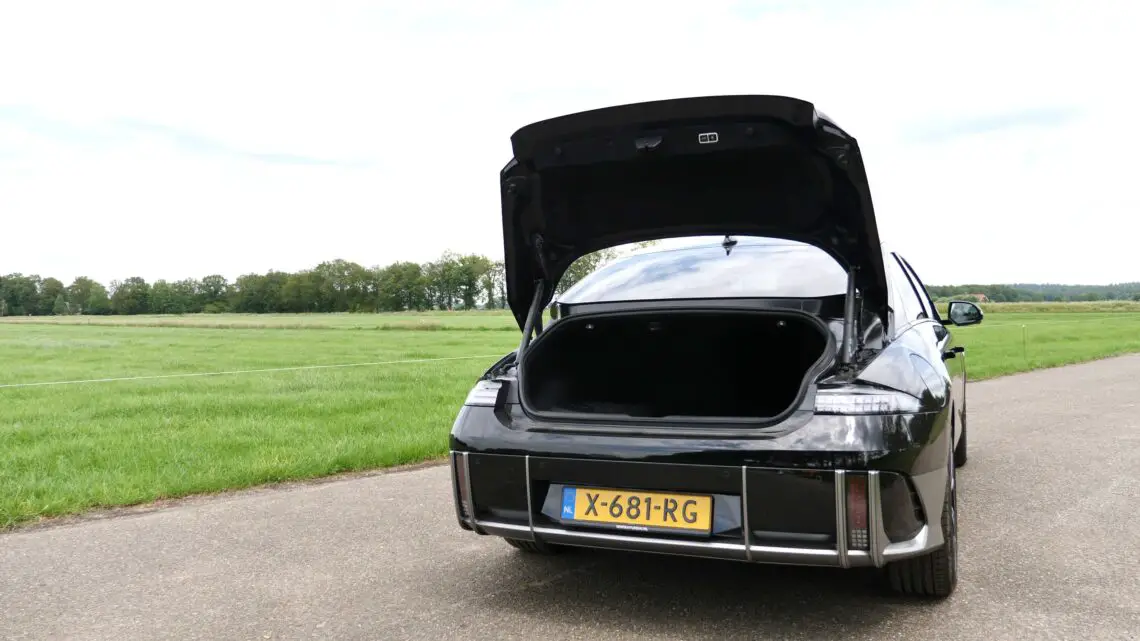
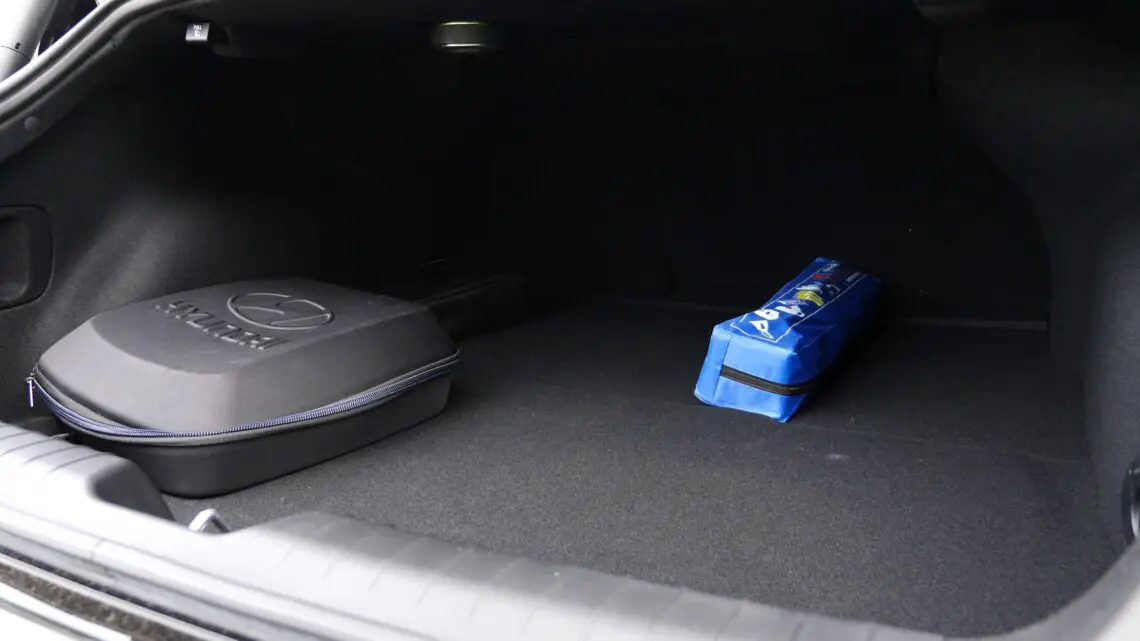

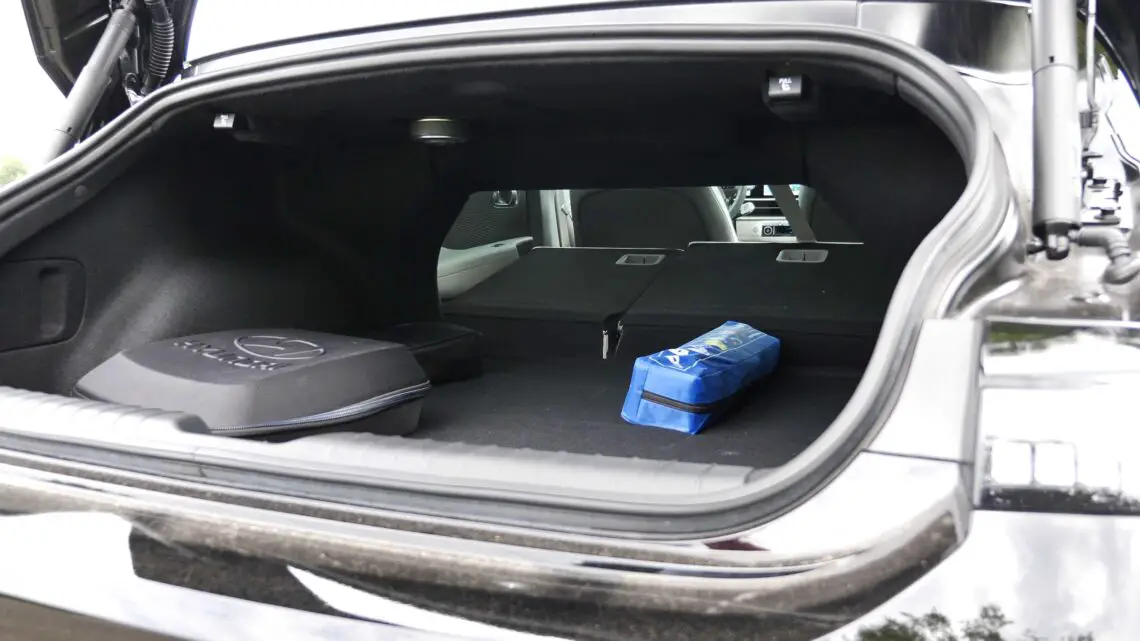
Spacious second row of seats
The second row of seats offers generous space thanks to a vehicle length of 4.86 meters and a wheelbase of 2.95 meters. Headroom is somewhat limited by the sloping roofline, but up to a height of 1.85 meters you sit comfortably. With two USB-C ports and a 230-volt outlet, rear passengers can provide fresh power to all their electronics.


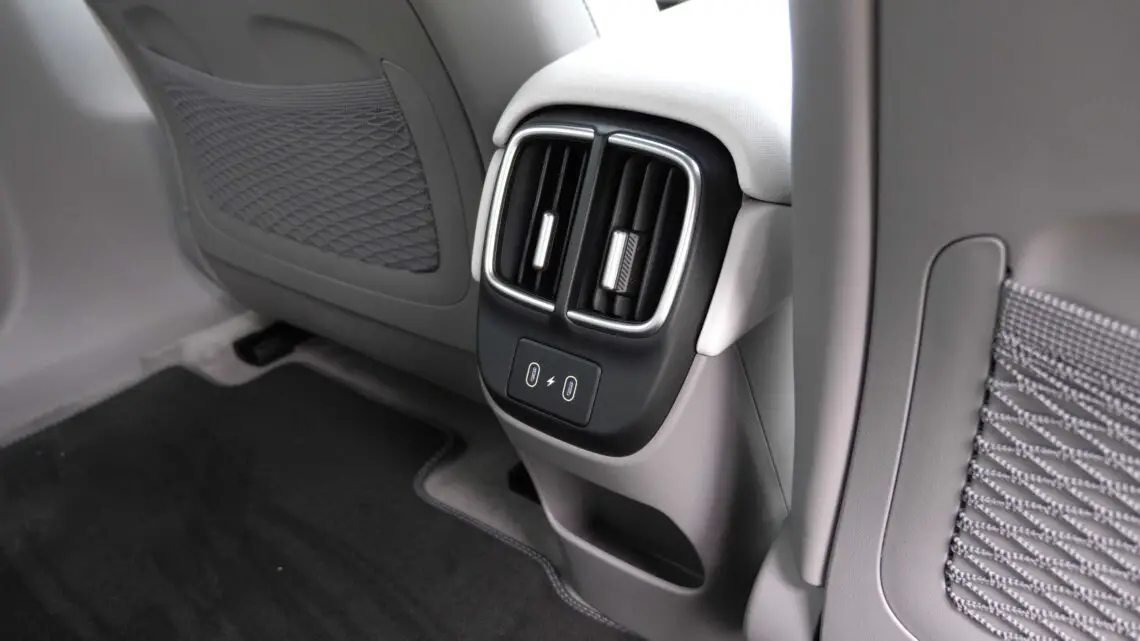
Wave pattern
The IONIQ 6 looks as special inside as it does outside. The interior has many striking shapes, such as a wave pattern in the door panels. The controls for the windows are in center console. Not to save costs, but to create more storage space in the doors.
The infotainment system works nice and smooth and is quite clear. One drawback is the lack of wireless Apple CarPlay and Android Auto; you still need a cable, and one with an old-fashioned USB A connector. Remarkable, since all other USB ports are USB-C except the main one in the front.


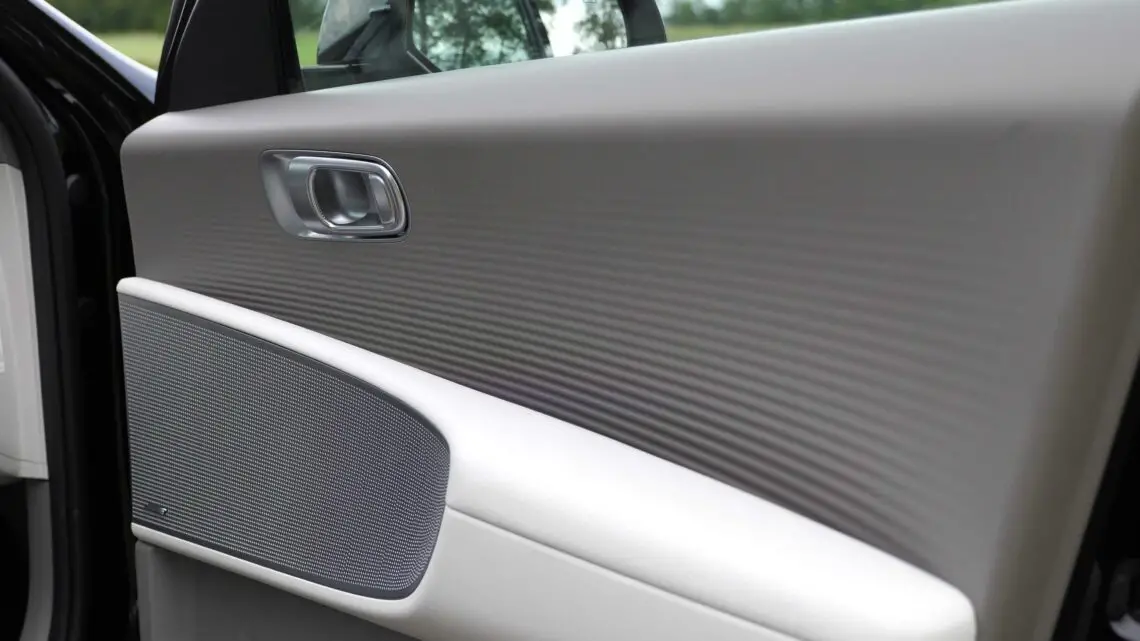
You can’t see anything through the rear window, can you?
You might not expect it with that sloping roofline and all those spoilers on the back, but rear visibility is fine. The large B-pillar does stand out, but that is offset by the blind spot cameras you get on every Hyundai. Every time you use your turn signal, the screen in front of you shows you on camera what is happening in your blind spot. A very nice and safe feature that we would like to see in more cars.
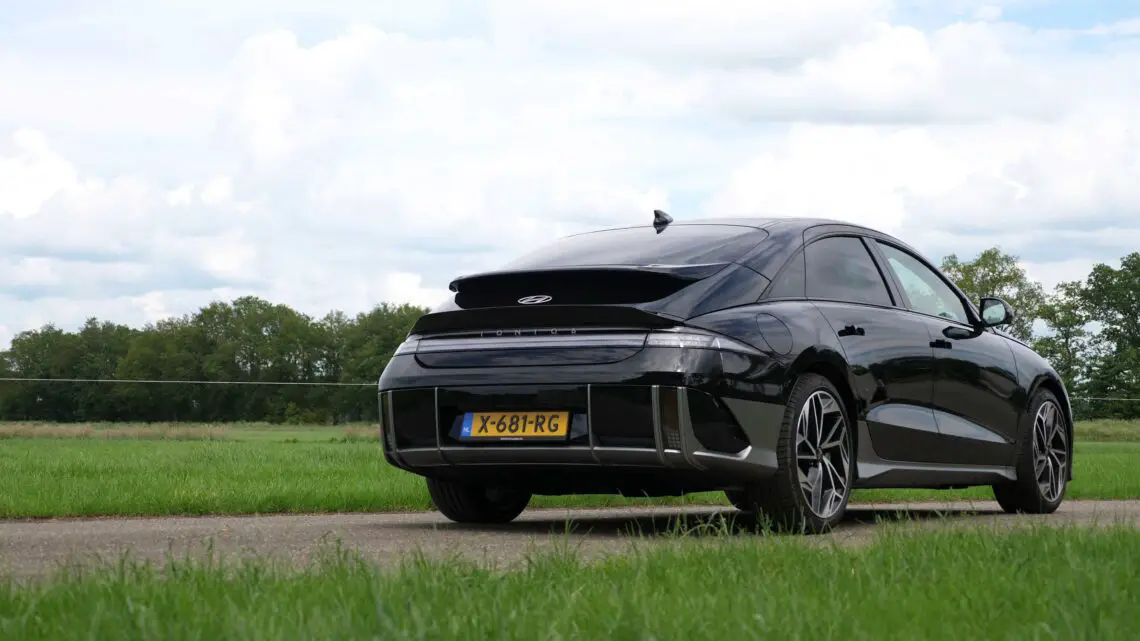
Sporty edge
Thanks in part to these features, the IONIQ 6 is an easy car to maneuver on the road, despite its hefty length. Adaptive cruise control and lane keeping assist also work extremely well, keeping the car neatly within its lane on the highway – without “ping-ponging” – and neatly away from its predecessor. Once you get off the highway, you can also have a good time steering yourself. The 6 is a lot sportier than the 5. You notice that in everything. The suspension is firmer and it steers more directly. A sports car it is not, but it certainly has a sporty edge.
Prices of the Hyundai IONIQ 6 start from 45,895 euros for the small 53 kWh battery, and the IONIQ 6 with large battery – with 614 km range – comes from 50,895 euros. In the video below, we tell you more about the sleek Korean.
